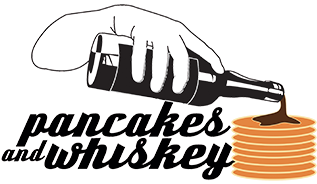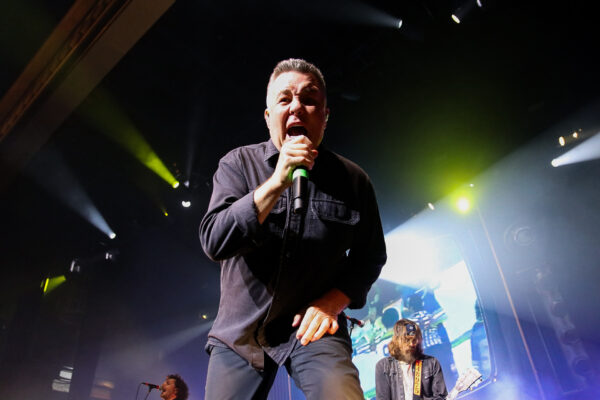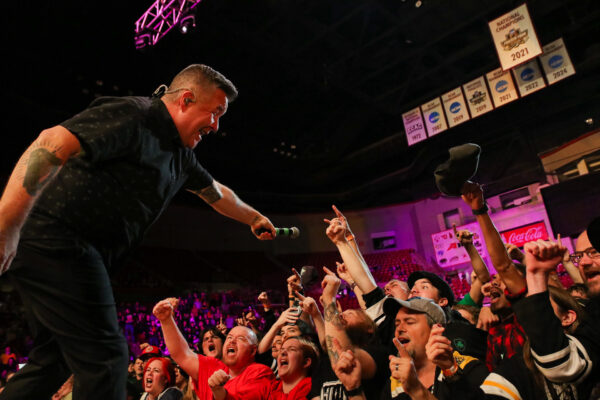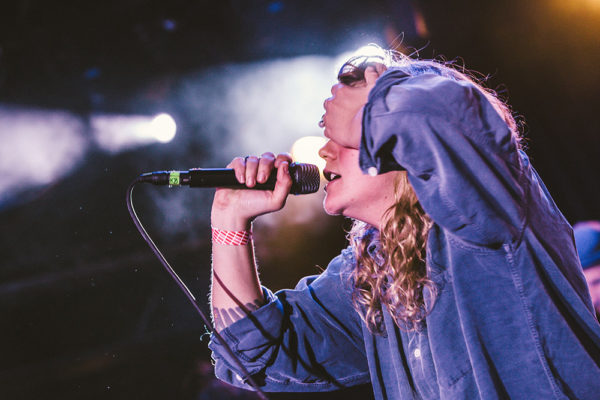The powerful production staged at Williamsburg’s National Sawdust of the Pussy Riot Theater performance was a multi-media/theatrical piece aptly entitled “Revolution.” This was a part musical, part multimedia, part wild party, part political statement, and part Q&A written by one of the best-known members of the Pussy Riot movement by the name of Maria Alyokhina. This was the only East Coast production of this show after they did several West Coast and South West performances leading up to a big SXSW bash. There seemed to be quite a lot of confusion from some of my friends and acquaintances when I let it be known I’d be going to the event, and even more so after I posted pictures of what I had witnessed. Frequent queries like “Aren’t Pussy Riot a punk band?,” “Where are their instruments?,” “Where is Nadya?,” and even “Aren’t they still in jail?,” were asked, even by some that I had deemed pretty knowledgeable about World events, and many of whom I thought would know better. So, I probably should explain some things about this Russian activist group and the production right off the bat.
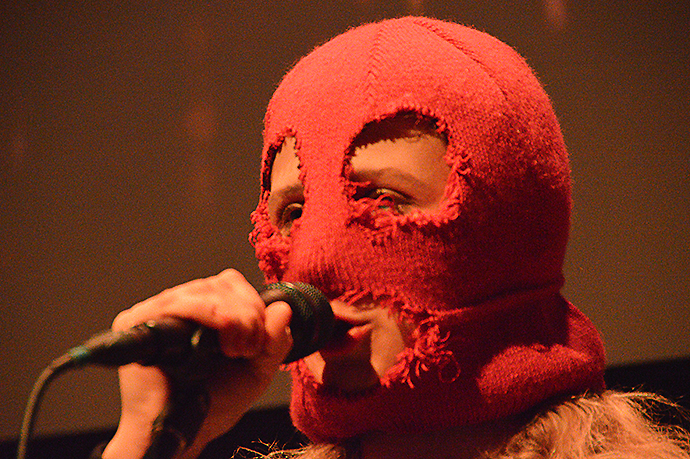
Pussy Riot Theater
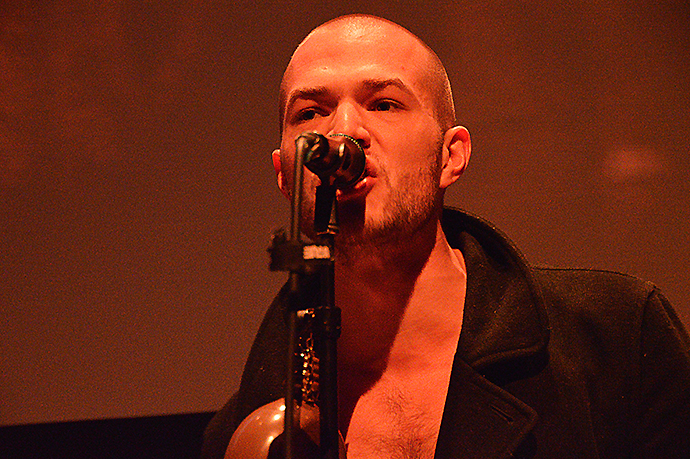
Pussy Riot Theater
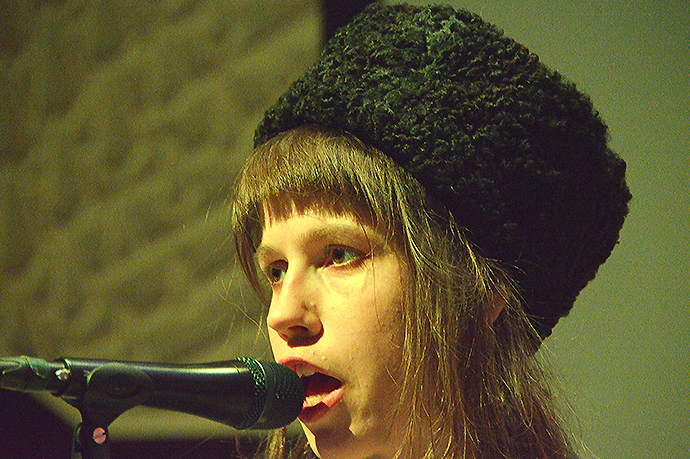
Pussy Riot Theater
First, this is not a tour by the punk band people often think about when they hear the name Pussy Riot. Truth be told, there was never a tour by that band anywhere, not even in their native Russia. The punk performances with a few women in their now iconic cutout colorful balaclava ski masks that were held in many iconic historic Russian locations that many remember faintly from news reports from a few years back were, in fact, guerrilla performances; unannounced public acts of defiance, staged to bring awareness to the extremely oppressive regime of Vladimir Putin. You see, Pussy Riot are not just an all-female punk band, but they are actually a giant resistance movement and network that uses all forms of art to show disobedience in the face of tyranny. The only reason we know a couple of these young females’ faces or names at all is that they were quite famously caught, unmasked, and jailed after one of their notorious rock protests in 2012. It was a punk opera of sorts called “Punk Prayer” that, of course, openly criticized Putin, and was spontaneously staged at a major Russian Orthodox cathedral. After the musicians were successfully pulled away from the lavishly gold-adorned pulpit, two of the young women were found guilty of hooliganism and jailed. So, both Maria Alyokhina and her bandmate and conceptual artist friend, Nadezhda Tolokonnikova, were locked away after a very public trial, and, in a surprise twist of fate, made celebrities of their revolutionary cause. Maria was even sent to a Siberian gulag and kept in insolation, and they both staged hunger strikes in protest against being held in jail away from their young children. They were both released from prison a couple of months early of their two-year sentences, and both returned to activism shortly thereafter.
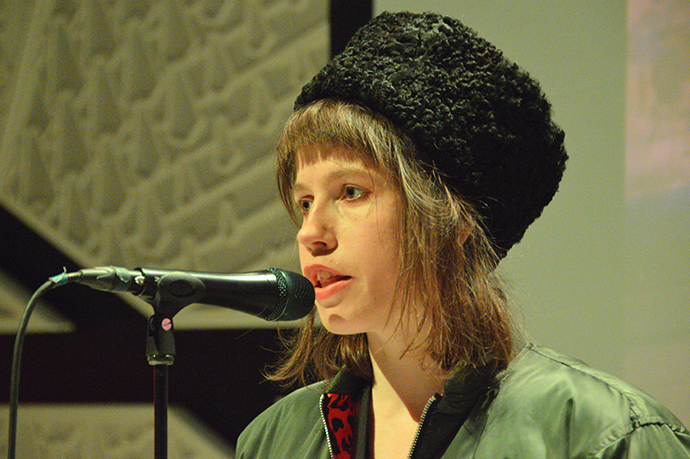
Pussy Riot Theater
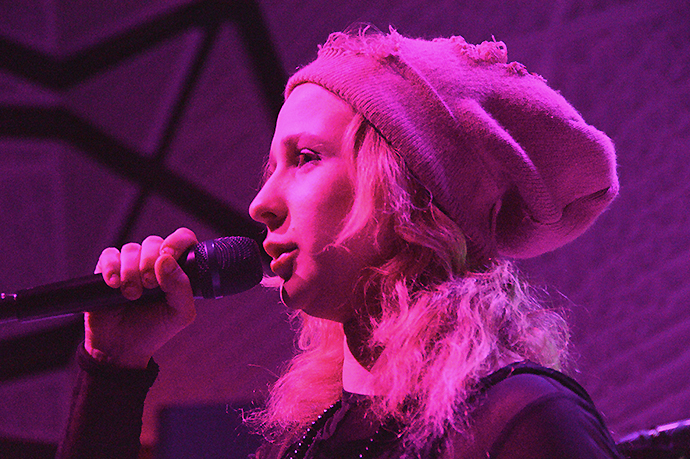
Pussy Riot Theater
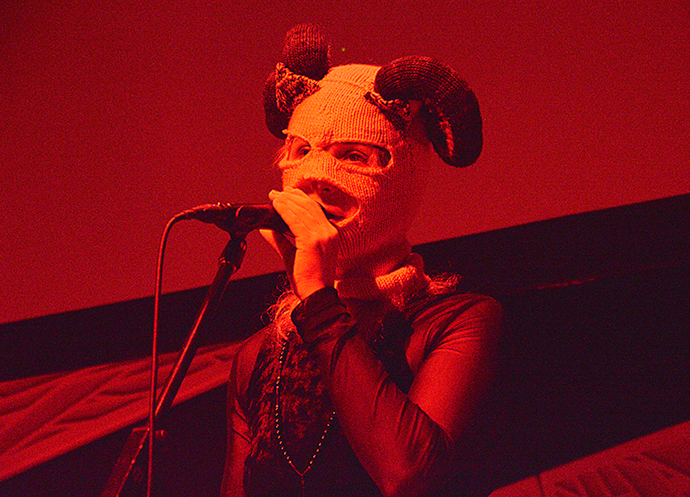
Pussy Riot Theater
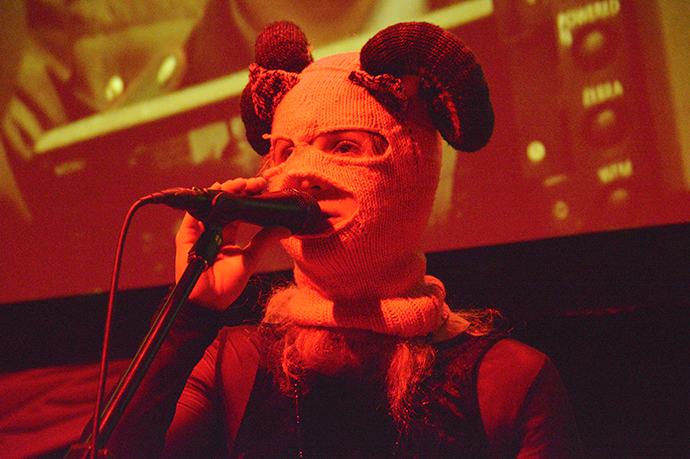
Pussy Riot Theater
This theatrical production of “Revolution” is based off the recently released autographical book by Maria Alyokhina, and both discuss her experiences in the activist group, her imprisonment, and, of course, her thoughts on political oppression, freedom, and art’s role in revolution. The show was largely told through musical numbers, some of which were somewhat punkish, some rather operatic, but most of the music was pretty house and electronica flavored with pulsating beats supplied by Vasily Bogatov dressed in a full catholic pope headdress complete with robes and divine mask behind the DJ table. Joining Maria for the music and theatrics was a sax player and operatic singer who went by AWOTT (Asian Women On The Telephone), and a big bald guy (yes, Pussy Riot was never an all women cause) by the name of Kiryl Kanstantsinau, who had some of the best killer dance moves. Behind them, as they acted this grand story out, there was an extremely compelling video made mostly of guerilla video and news footage compiled by Taisia Krugovykh and also some video art by Katya Scheglova, as well. It was all in Russian of course, so there were English subtitles scrawled across the top of the video throughout. Yury Muravitsky, the director of these shows, was actually denied a visa to the US to attend the shows, which may very well be some real shady behavior on the part of our own government. During the Q&A portion of the show, Yury had an empty seat on stage alongside his group, symbolic of his very hard felt absence.
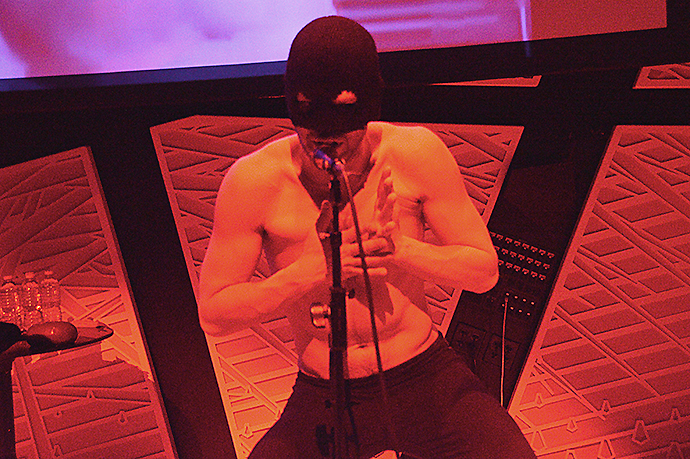
Pussy Riot Theater
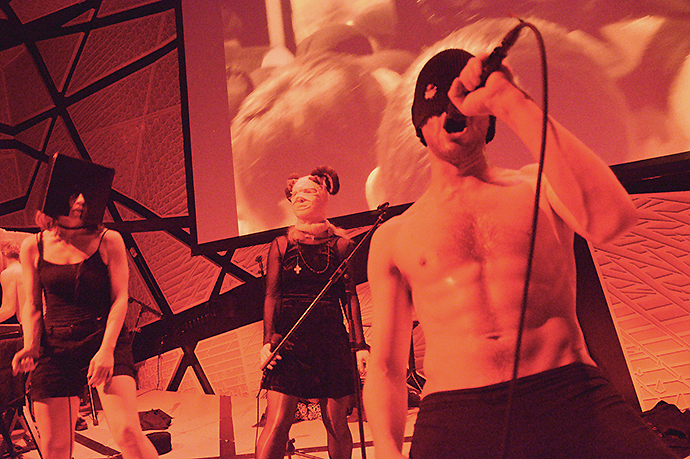
Pussy Riot Theater
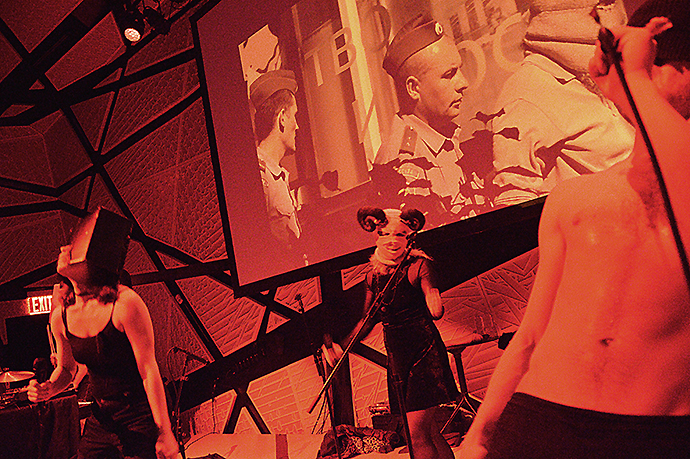
Pussy Riot Theater
One of the more frightening aspects of the show to many of us was the fear that the Ruskies fixed our recent election, and that our Presidential administration’s downright chummy relationship with Putin could put all of our freedoms at risk. There are very real concerns that our country could descend into that kind of brutal regime, and it certainly drives home the fear and mistrust that were cornerstones of the story they told this night. One of the more striking moments of the show was when they exalted “The thin line between democracy and tyranny,” that really stuck with me. Still, it was a powerfully personal tale with tear-jerking scenes that made my whole heart sink multiple times. I did especially like the more anarchic punk-like moments, like when Kiryl spilled water into the audience while screaming, or when he and AWOTT descended into a simulated sex act scene after a rather anarchic romp of burning things and wrecking the stage.
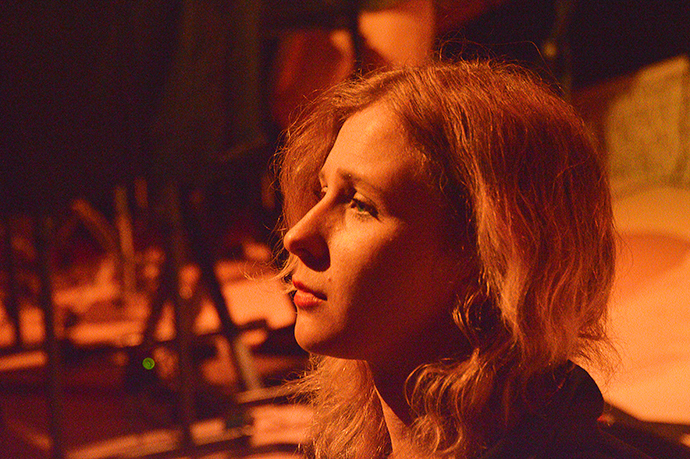
Pussy Riot Theater
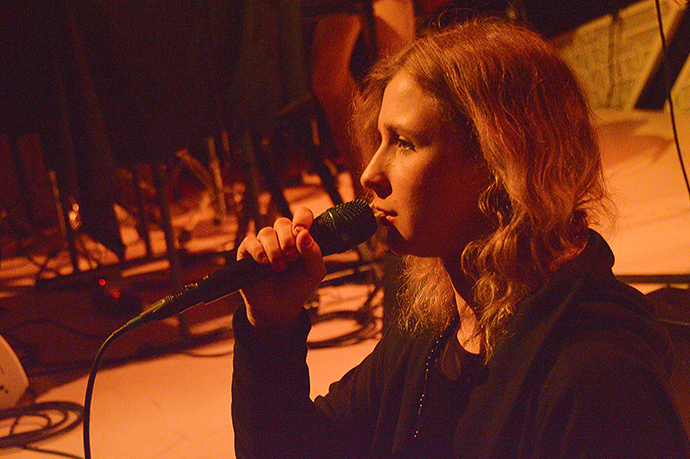
Pussy Riot Theater
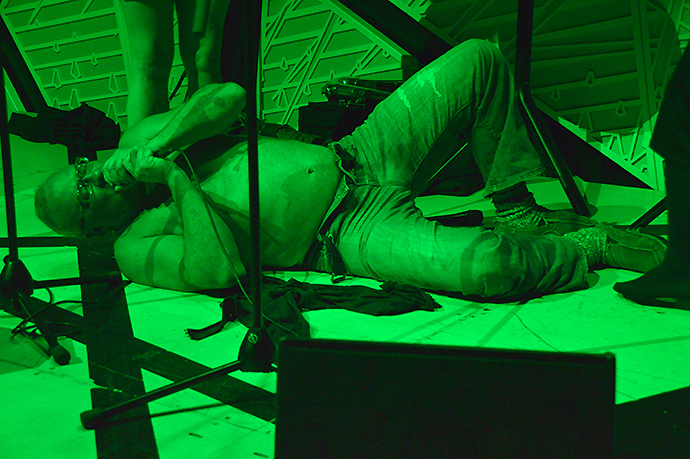
Pussy Riot Theater
After the show, there was a much more civil Q&A session where Maria and some of the rest of the cast were interviewed by veteran rock journalist Vivien Goldman. I really wished the questions were of a higher caliber, as many were ridiculous and some even felt insulting, although it was hard to tell how much they all caught or could explain in their broken English. However, the thing that really stuck out for me was the fearlessness in which Maria and the others exhibited after being asked “Are you afraid of returning to Russia?” They seemed to not be afraid at all of facing this powerful regime that is known to assassinate or otherwise “disappear” their political rivals. The brevity in their message of resistance is perhaps the most challenging idea of their whole pièce de résistance and proved extremely inspirational.
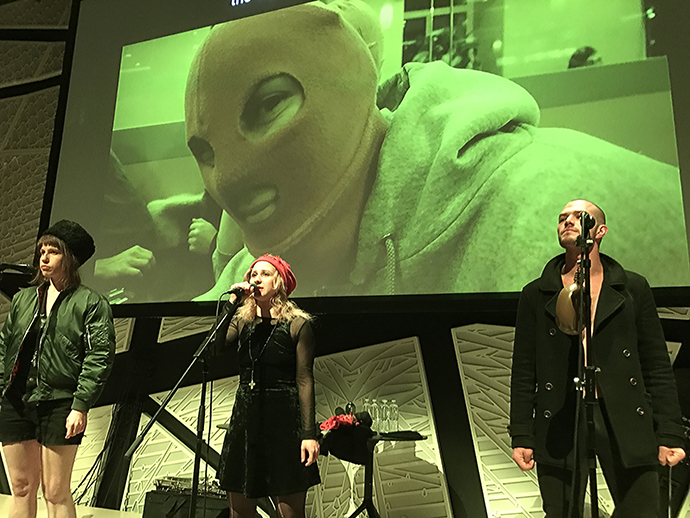
Pussy Riot Theater
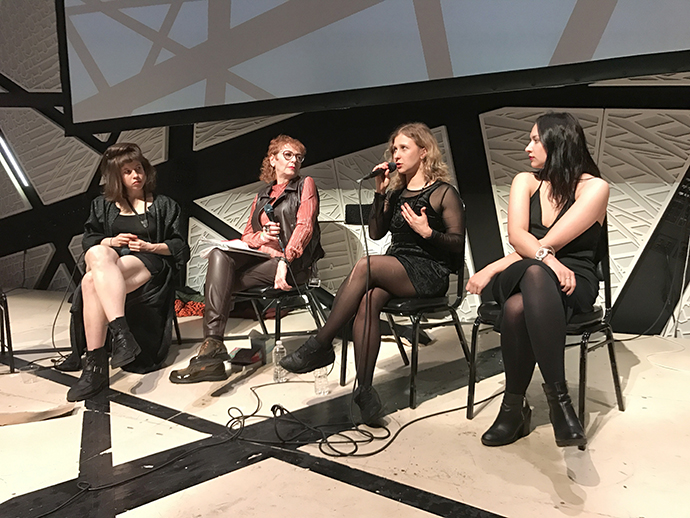
Pussy Riot Theater
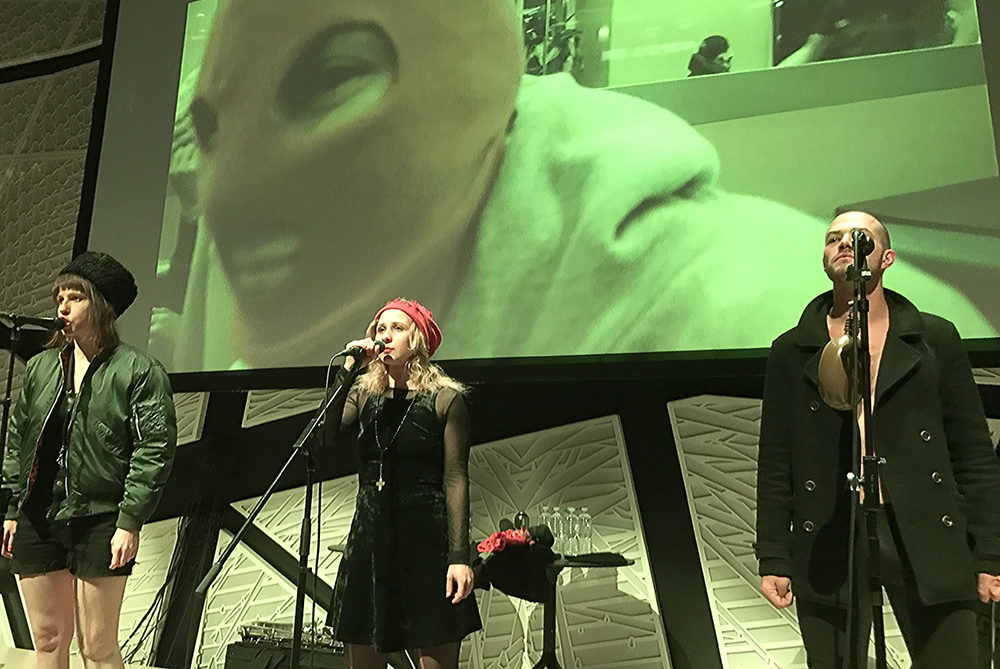
Pussy Riot Theater
Article: Dean Keim
